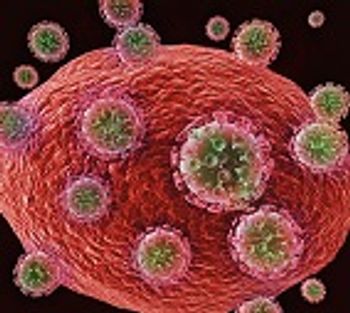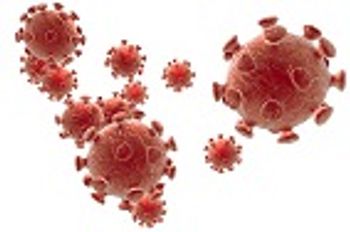
A new study conducted by the University of Maryland shows that the majority of the people who think that they are allergic to penicillin are not; increased access to testing within hospitals can improve treatment.

A new study conducted by the University of Maryland shows that the majority of the people who think that they are allergic to penicillin are not; increased access to testing within hospitals can improve treatment.

A traceback investigation has found that raw scallops have contributed to the hepatitis A outbreak in Hawaii.

A new study conducted by an Ebola diagnostic laboratory in Liberia has found that there is a connection between the survival of individuals with Ebola and co-infection with Plasmodium parasites that cause malaria.

A UNC bioethicist is leading the PHASES Project, funded by a grant of over $3 million from the National Institutes of Health, in an effort to address the need for effective HIV prevention and treatment options for pregnant women worldwide.

Scientists at Michigan Technological University have created a process for creating synthetic DNA that prevents cells from forming harmful proteins that result in a number of maladies; this process can lead to the development of more effective gene therapy drugs.

Researchers have investigated the risks and benefits regarding administering measles vaccines to infants under the age of 9 months.

Mirus Bio, a spinoff company from the University of Wisconsin-Madison, has developed a method for “silencing” RNA against hepatitis B (HBV) that has reached clinical trials in Asia, Europe, and the United States.

A new discovery made by researchers at Harvard Medical School suggests that SED proteins, proteins that had previously been overlooked, have turned out to be “major players” in bacterial cell wall synthesis.

With the assistance of funds granted by Congress, the Department of Veteran Affairs (VA) will extend new hepatitis C (HCV) treatment to all infected veterans within their healthcare system, of all stages of illness and regardless of whether or not the infection had been acquired during military service.

An essential component of HIV that explains how the virus infects other cells and remains undetected by the immune system has been discovered by researchers at the MRC Laboratory of Molecular Biology in Cambridge and the University of London.

In response to an increase of hepatitis C cases in Rhode Island that have resulted in hospitalizations and deaths, the Rhode Island Department of Health and the Rhode Island Public Health Institute have worked together to compose their first ever, comprehensive epidemiological report.

A new study conducted by researchers at John Hopkins Medicine has found that most of the proviruses in the latent HIV reservoir are defective but the current methods used to measure size of reservoirs, PCR and QVOA, are not precise in their measurements in that their results often count proviruses with and without defects.

A new study found that girls between 9 and 14 years of age who received a two-dose HPV-16/18 AS04-adjuvanted vaccine over a 6 or 12-month period of time are just as protected from HPV as girls between 15 and 25 years of age who received a three-dose vaccine over the course of 6 months.

Researchers have found that although HIV makes individuals more susceptible to acquire tuberculosis, it is not the cause of the spread of multidrug-resistant tuberculosis.

The first household survey was conducted in Liberia to examine the collateral harm to maternal healthcare delivery services in areas impacted by the Ebola epidemic. It showed that since the Ebola epidemic began, facility-based deliveries have declined mostly due to fear of acquiring infection, keeping women away from using the healthcare services available to them.

Researchers from the Oxford University Clinical Research Unit have found that a 5-minute CRP test can assist in the ongoing fight against antibiotic resistance by reducing antibiotic misuse for respiratory infections.

Researchers at St. Jude Children’s Research Hospital discovered that adjuvanted flu vaccines do not protect obese mice as they do their lean counterparts from flu infection.

The CDC is providing $67 million to the nationwide effort to fight antibiotic resistance.

Engineers at the Massachusetts Institute of Technology have developed a new type of customizable vaccines using messenger RNA that has proven to effectively combat a wide range of lethal pathogens when administered to mice, and might be able to reduce disease outbreak response time in the future.

Researchers at the University of Virginia School of Medicine have made a discovery that may offer a way to boost patients’ immune systems using M-CSF.

A new study has confirmed that significantly more women than men diagnosed with Staphylococcus aureus bacteraemia will die within 30 days of acquiring the infection.

A new treatment has been discovered by researchers at The University of Sheffield that can be used to fight antibiotic-resistant bacteria, such as MRSA, by using proteins called tetraspanins.

The IDSA and ATS have updated the Clinical Practice Guidelines for HAP & VAP for the first time since 2005 to recommend that each hospital generate antibiograms and reduce the use of antibiotics in treatment regiments.

The world’s largest public-private partnership has been formed in a collective effort to battle antimicrobial resistance through a global project, CARB-X, which will be comprised of expert product developers who will research and develop new antimicrobial products.

A new study conducted by Andreas Peschel, PhD, and colleagues at the University of Tuebingen in Germany, has shown that lugdunin, a bacteria naturally produced by the human body, can be used as an antibiotic that can eliminate Methicillin-Resistant Staphylococcus aureus (MRSA).

World Hepatitis Day aims to increase awareness and understanding of viral hepatitis. The ECDC discusses Europe’s plan to eliminate hepatitis by 2030.

Through the use of targeted screening programs, the ECDC has found that foreign-born migrants are at a higher risk of hepatitis B and C. Identifying risk groups can help practitioners reduce the burden of chronic hepatitis.

Recent studies show that women are at higher risk of contracting HIV; however, measures can be taken to prevent infection, as well as the transmission of HIV from mother to child.

The US Food and Drug Administration has approved VIEKIRA XR, the first co-formulated three direct-acting antiviral for adults diagnosed with genotype 1 (GT1) chronic hepatitis C virus (HCV) infection.